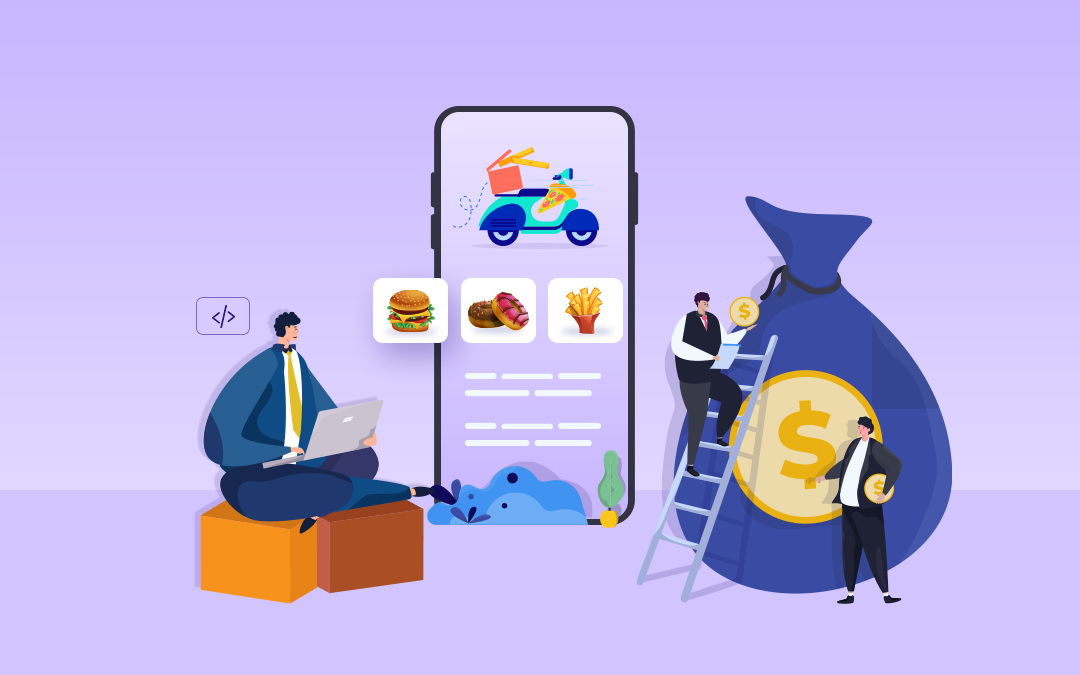
The Key Elements of a Winning Food Delivery Business Plan
Wondering how helpful it'd be if you had awesome online food delivery business plan guidelines to write your B-plan more comfortably? Click & scroll!
Attention all food-loving entrepreneurs🕴️! Are you ready to turn your passion for food into a successful business venture? With the rise🚀 of the food delivery market, there's never been a better time to get started.
But to make your food delivery business a success, you need more than just a great menu and a catchy name. You need a winning business plan that will guide your efforts and set you apart from the competition🎯.
Think of your business plan as a recipe for success, with carefully selected ingredients that come together to create something truly delicious😋. But just like a chef, you need to know which ingredients to choose and how to mix them to create the perfect dish.
In this blog post, we'll explore the key elements of a winning💯 food delivery business plan not only satisfies your hunger for success but also leaves your customers craving more.
So let's get cooking!♨
Food delivery business overview🧐?
A food delivery business is a service that provides customers with food from restaurants or other food establishments that they may not otherwise have access to.
This type of business typically operates through a website or mobile app that allows customers to order food from a variety of restaurants or food providers in their area.
There are several types of food delivery businesses, including:
Aggregators:
These businesses partner with multiple restaurants to offer customers a range of menu options in one place. Examples include Uber Eats, Grubhub, and DoorDash.
Independent Delivery Services:
These businesses partner with one or a few restaurants to offer delivery services exclusively for those establishments.
Cloud Kitchens:
These businesses operate their own kitchen and offer delivery-only meals to customers.
To succeed in this industry, a food delivery business must have a solid business plan, a strong marketing strategy, and a focus on customer service and experience.
Steps to create a successful Food delivery business plan✌🏻
Starting a food delivery business can be an exciting and rewarding endeavor, but it also requires careful planning and preparation. Here are the key steps to creating a successful food delivery business plan.
1. Business objectives, mission, and vision statement🎯
Putting down your business objectives is step one when it comes to business plans. Come up with your short-term and long-term plans, align them with your objectives accordingly.
Cover up all the WH questions in your business objectives.
Your mission statement should contain the purpose of your business and your stakeholders. And your vision statement should be futuristic towards your business goals.
Make sure to be very clear on these three since they could seem to overlap with one another.
2. Narrow down the business and revenue model💰
There are numerous business models to choose from when it comes to running an online food delivery business. Let’s say you choose to run your startup using an aggregator business model.
State what kind of business model it is - “X food delivery platform will be operated by the admin, where the users, the restaurant, and the delivery partner are connected under the marketplace.”
And it goes on.
Determining the revenue stream should also be given equal weightage since it’s how you earn money. Make sure to collaborate with your CFOs and CMOs to learn their insights on the same.
CFOs will communicate their cases based on the stakeholders’ mindset and the CMOs try to commemorate the audience’s reaction to the revenue system, the market feasibility, etc.
3. SWOT analysis on the food delivery industry🏬
SWOT analysis - Strength, Weakness, Opportunities, and Threat. Understand your market based on demographics, target audience, the content they consume, their attention span, competitors, and include both the internal and external factors that might affect your business.
Use this template to include SWOT in your online food delivery business plan.

4. Develop a tech solution💡 for your online food delivery business?
Analyze the technology that has been used in the market by your competitors. Check the performance of the apps or web platforms of that particular technology before choosing it.
If you plan on buying a ready-made food delivery solution then Flutter would be the best technology option.
You can launch your business more quickly and run your startup more efficiently. In your business plan, try to mention the pros and cons of the top 3 technologies that you plan on using to build your tech solution.
And also mention why you chose the one - its advantages, the app solutions in the market that functions perfectly well, and other technical aspects of choosing the technology.
5. Allocate a budget to build your online food delivery app & other business expenses?🤑
Start by mentioning your investors’ list, the mode of investment you planned on procuring for your startup, & the details of the seed investor.
When you happen to stumble upon the Series A & B investors, keep including them as well until your startup stabilizes.
Plan to include your budget;
- To procure technology for your online food delivery business.
- Product launch marketing budget.
- Work on the split-up percentage of your revenue and the earnings distribution to the delivery partners.
- Platform promotion budget. (to get the restaurants list in your online food delivery platform)
- Personnel management budget (if there is any)
And many more.
6. How to promote your food delivery business?📢
These are some of the points to include in your business plan about promoting your online food delivery business.
- Create a tempting UI for your website (Collab with a super cool 😎 designer)
- Give sufficient content concentrating on the SEO aspects of your business on the website. (Promotion gets so much easier when you target it properly)
- Run ads when you plan on a sale. (Product launch sale can be planned)
- Use social media handles to engage with your customers, be creative with the word choices. (Food is one of the easiest niche but highly competitive - Be unique)
- Social media manager. (Please do not be monotonous)
- Test your audience before dumping with content all over the social media handles and your website. (test it through FB /Google ads)
- Encourage the restaurant listing in your platforms to collab with an influencer to talk about their food and how the audience can order from your food delivery platform.
Conclusion👉
These are some of the aspects to cover in your food delivery business plan. Once you are done formulating your business plan, the first step you’ll have to do is what kind of technical solution to get started your startup.
Well, you can stop running around and just get to know our ready-made UberEats clone app - WooberlyEats.
Our product is 100% customizable & scalable which means you can shape the platform according to your business needs.
Check out our FREE demo and WhatsApp us about any questions you have - technical or non-technical.
We are here to help you. Let’s lift each other!!
Let us help you create a food delivery app
Other food business resources you might like:
✳️ Swiggy clone





